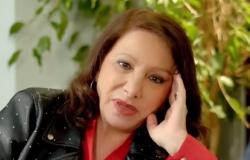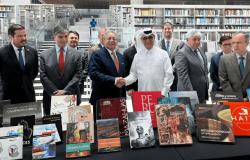The book tells the story of Aguilar de López and the experiences lived by the journalist over the years, through her role as a journalist. “We are very happy that the teaching that journalism left to Élida López can be transmitted and left to future generations; also what she has demonstrated throughout her life in her professional career,” said the Governor.
“When I say that journalism taught me, it is not just any phrase, but it is to highlight everything that journalism left me,” said Elida Aguilar de López at the beginning of her speech, who reviewed her beginnings as a columnist in Diario Norte, as press of the Unión Cívica Radical (UCR) and also, his audiovisual works.
Aguilar de López recalled her years as an interviewer of the makers of the time, writers, singers, artists, jurists, leaders of the Qom ethnic group, “with very personal interviews,” emphasizing that they were stories that had to be shown. She thanked her team that accompanied her during her career in journalism and finally, she dedicated the book to her husband Eduardo López and her daughter Alejandra and “to all those who dedicatedly chose this noble profession. ”.

Élida’s last prank
The journalist Eduardo López celebrated the participation of journalists during the presentation of the book because “it is like being with family” and it is the place “where Élida is going to present, as she says, her last prank, (she says) after having traveled for more than half a century all the levels and all the advances of the journalistic task, as a balance of all this,” he explained. He thanked them for their support at this event and remembered the renowned journalists of the province.
Recover humanity in the practice of journalism
In the presentation, the director of Diario Norte, Sergio Schneider, expressed: “This book, in a certain way, reflects what Élida is like and what Eduardo is like, because there is a symbiosis of the two that for me it is very difficult to talk about Eduardo without talking about “Elida and talking about Elida without talking about Eduardo.” “I expected to find a book that would relate, I don’t know, some type of findings in journalistic practice, recommendations for students and in reality I found the soul of Élida,” he said.
Along these lines, and referring to the “old debate already settled” of subjectivity versus objectivity journalism, Schneider assured that, in the book “you see what the journalist saw, what she looked at; It’s like reading the note and then reading what happened in the heart, not just in the head, but more than anything in the heart, of the person who witnessed what ended up being an article in a newspaper.” “It is a book of soft emotions,” said the journalist, emphasizing that the story “is the recovery of humanity in the exercise, in this case, of journalism, in a dehumanized world.”








